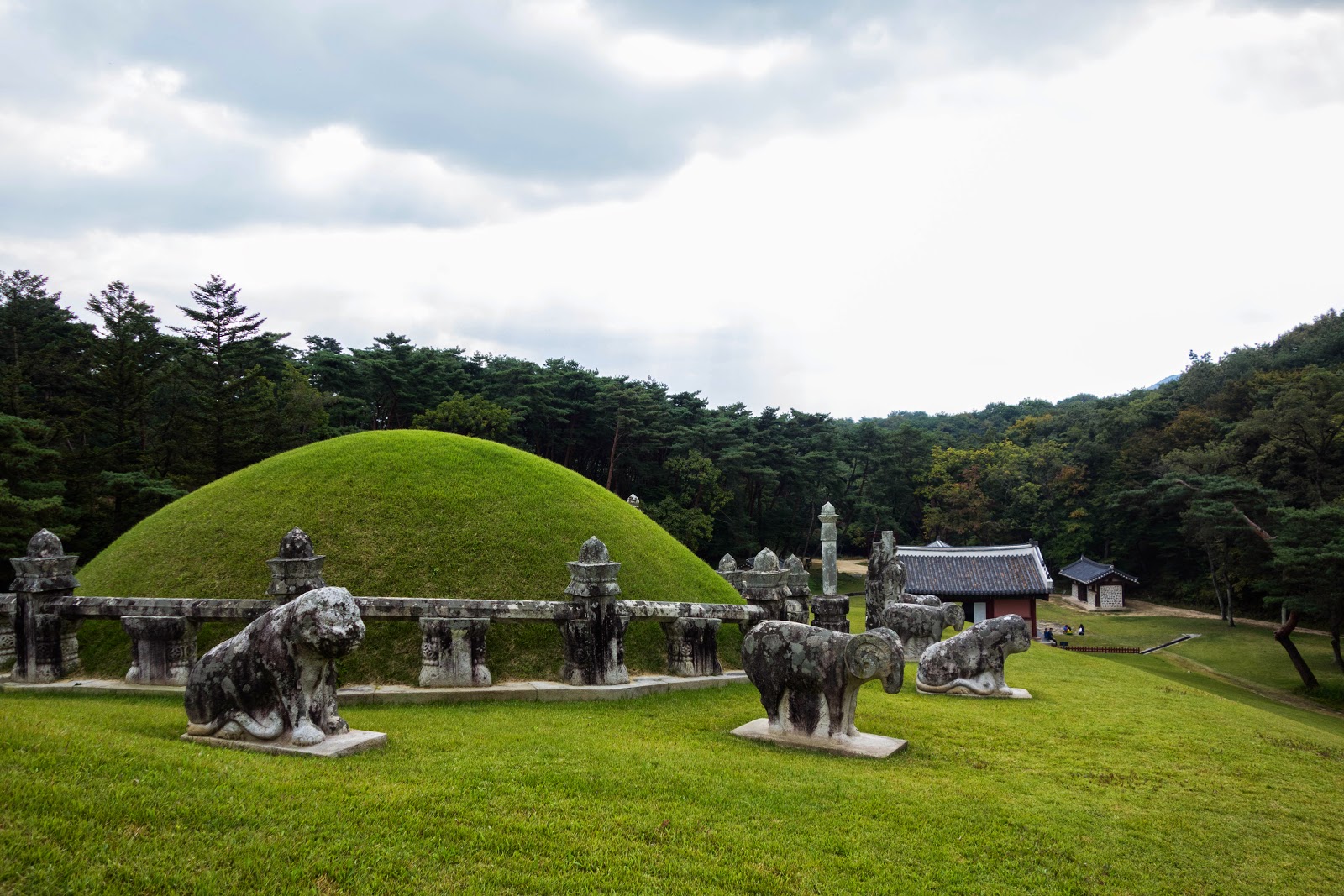Last Friday was public holiday to celebrate Gaecheonjeol (National Foundation Day). This holiday celebrates the creation of the Gojoseon state in 2333BC. The day is also celebrated in North Korea.
My in-laws were keen to take me to the far eastern part of Korea to see the east sea. The traffic was pretty bad most of the way (being a public holiday), but on the way we stopped to stretch our legs at the Royal Tomb of King Sejong the Great.
King Sejong the Great was, as his title suggests, one of the greatest and most loved kings in Korean history. He is credited with a lot of advances in science, strengthening the Korean military, and developing positive foreign policies (including encouraging trade with Japan). His biggest lifelong accomplishment was the creation of Hangul, the Korean alphabet. Prior to Hangul, Koreans had relied on Chinese characters to keep records and write laws. King Sejong recognised this as being a problem. Learning Chinese characters was (and still is today) very hard and time consuming, something that only the wealthy could dedicate time to learning. King Sejong recognised that if the poor were to have any chance of becoming educated and fairly being represented in legal disputes, a simple writing system was needed.
There are actually two kings buried at this site. On the map below, King Sejong is to the left (Yeongneung (영릉)), and King Hyojung is on the right (Nyeongneung (녕릉)).
Tickets are cheap! Only 500won (50 cents) to enter.
As you enter, the first thing you will see are a bunch of astronomical measurement units that King Sejong was credited with inventing.
A statue of King Sejong.
And my obligatory "look, i'm here" photo.
There is a small museum with some old paintings and records (written in Chinese).
We continued walking along the path towards the tomb. On the way we passed a pond with ginormous gold fish, close to 40cm long!
You can see the tomb in the distance (the grassy mound behind the building).
This building is called Jeongjagak. It is called this because it is shaped like the Chinese letter jeong, which is shaped like the letter T. For anyone who is a regular reader of my blog, you might remember the offering table Koreans make for their ancestors on Chuseok (Korean thanksgiving). That is what this building is for.
Inside are some tables where the offerings would be laid out.
Here are the foods put on the table.
Even today, people still come here to do the offering ceremony to King Sejong. I'm sure this would be a great honor for Koreans which makes me wonder how they choose who gets to do the ceremony.
Across from the offering building is a small home for the grounds keeper.
View from up top.
This is a stone warrior to guard the tomb. Behind him is his horse.
After checking out King Sejong's tomb, we crossed to the other side of the hill to visit the tomb of King Hyojung.
It has a similar layout, with the building for memorial offerings in front of the tomb.
This is the queens's tomb.
And here is King Hyojung's tomb (further up the hill because he was more important).
King Hyojung's tomb on the right, the queen's tomb on the left.
Time to head back to the car park.
On the way back, we stopped off at the ritual house for King Hyojung's tomb. This place was used for food preparation and storing offering vessels. Most of the ritual houses attached to the royal tombs of Joseon were destroyed or heavily damaged during the period of Japanese colonial rule and the Korean war. Happily, this ritual house survived.
There were dragon flies everywhere. One of them finally landed on me long enough for me to take a photo.
The hill climb back to the car park.
We then jumped in the car and continued our journey to the eastern coast of Korea. On the way I spotted a prime example of the terrible unsafe driving practices many Koreans engage in. In the car in front of us, two boys (under 10 years old) were standing on the seat poking their heads out the sunroof.
Stay tuned for an east sea update.



















































































